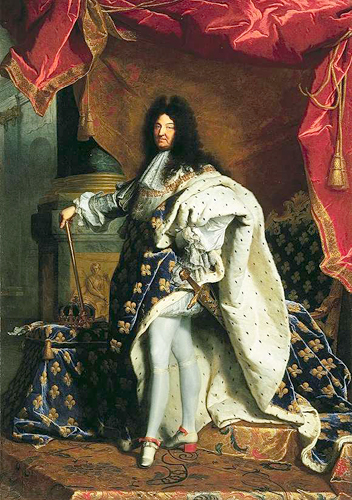The portrait of the king thus functioned as an instantiation through which the abstract property of godly power could be exemplified and materialise. The identification with a divine image allowed for the amalgamation of the king’s corpus naturale with his corpus mysticum thus rendering visible the invisible foundation of his sovereignty. Conceived as a model of God, the king’s authority was grounded in a transcendent realm which could only be accessed by means of aesthetic experience. Therefore the imagination of the king’s godly nature was expressed through the mise-en-scène of his individual person and his claim to supreme authority was conveyed ubiquitously through the aesthetics of spectacle and artistic representation.
Hyacinth Rigaud’s huge painting [fig. 1] shows the sixty-three-year-old king in his coronation robes, the royal sword at his side and holding the royal sceptre. On his right-hand side, slightly in the shadow, the crown is presented on a stool. Even though the king is of advanced age, the picture shows a vigorous and healthy-looking middle-aged man with muscular, almost athletic legs, strong enough to support his heavy and precious robes and to carry the insignia of royal power.
